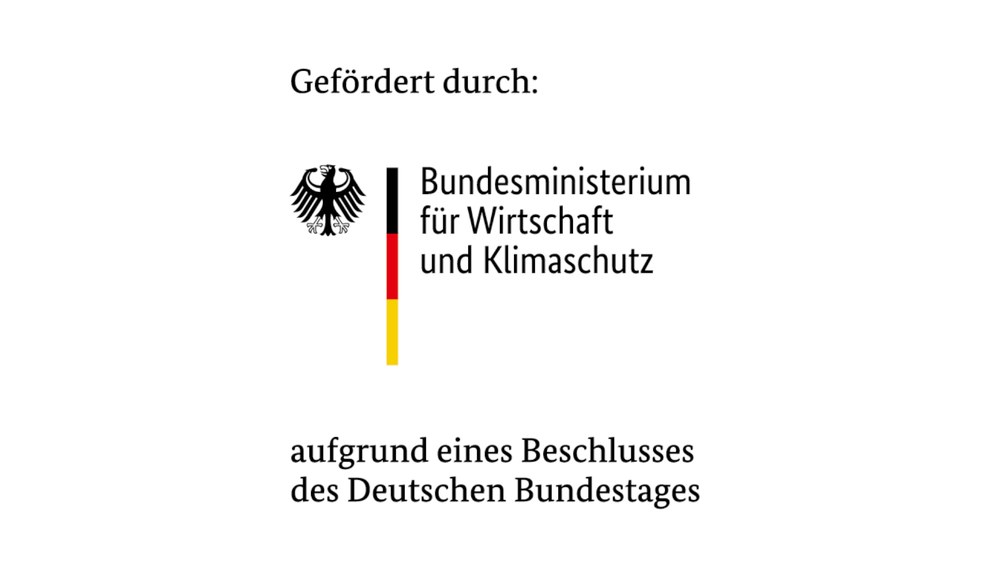To reduce the climate impact of aviation, significant developments are needed in new energy sources, new aircraft concepts and components, and alternative propulsion solutions. A hybrid electric propulsion concept, consisting of an electric motor and a boundary layer ingestion thrust generator, is a promising approach for short-, medium- and long-haul aircraft, as these aircraft generate the majority of the emissions caused by air traffic. An engine combining these two technologies is located at the end of the aircraft fuselage.
The DLR Institute of Propulsion Technology, together with the Technical University of Braunschweig and Oswald Elektromotoren GmbH, is investigating such a revolutionary propulsion system in the LuFo-funded EPIFAN project (Development of a hybrid electric propulsion system consisting of an electric motor and a boundary layer inlet thrust generator with experimental off-design testing). DLR is focusing in particular on the requirements for the fan stage resulting from the characteristic inflow conditions in the event of a run-in fault.
Energy loss compensation and elimination of speed deficits
The aim of the propulsion concept is to use a thrust generator - in this case an electric motor - to compensate for the energy losses caused by friction between the aircraft fuselage and the air flowing around it during cruising flight, thereby eliminating the speed deficit. Because of the lower inlet velocities in the boundary layer inlet thrust generator, less fuel is required to generate thrust. Since the potential for fuel savings is limited by the resistance of the aircraft fuselage, and the performance class is therefore lower than that of conventional engines, a hybrid-electric power supply is suitable for these additional thrust generators. Another advantage is that the propulsion system can also be converted to a hybrid-electric fuel cell propulsion system using hydrogen.
An interdisciplinary consortium is working together, each focusing on the electrical and aerodynamic components. The experts are bringing together their expertise with the aim of specifying, designing and experimentally testing a hybrid-electric propulsion system at ground level. The joint project is led by Oswald Elektromotoren GmbH, a family-owned company specialising in customised electric motor solutions. The Institute of Flight Propulsion and Turbomachinery (IFAS) at the Technical University of Braunschweig and the DLR Institute of Propulsion Technology are represented in the field of aerodynamic drive components.
There are a number of challenges in each of the above project phases:
Specification: The positive effect of boundary layer induction and the associated fuel savings can be exploited primarily in cruise flight. With regard to the system weight of the propulsion system, cruise flight should therefore be given priority in the design. However, the other operational aspects of a flight mission must be able to be carried out safely and efficiently. Since the air breathing system in particular has a power requirement that is dependent on the ambient conditions, the low altitude and low speed operating points are particularly challenging, as the power supply to the electric motor is limited, taking into account the design objectives mentioned above. The resulting fan operation is challenging in terms of both stability and efficiency. One way to improve both aspects simultaneously is to use a fan blade adjustment.
The detailed design phase involves the design of the specified powertrain. This takes into account the different operating conditions in cruise flight as well as the off-design near the ground and is transferred to a test vehicle to be manufactured. This is followed by a comprehensive numerical evaluation of the fan stage, from which a test matrix is derived for experimental testing.
The testing of the entire propulsion system at ground level is unique in the research landscape. The integration of the electric motor in the fan hub, the connection to a hub body representing the aircraft tail and the embedding in an engine nacelle are characteristic unique features. In the IFAS crosswind wind tunnel, the entire drive train will be analysed in terms of design objectives and stability-limiting flow effects. The project team expects a change in the failure mechanisms depending on the respective off-design flow field (direction of the crosswind, angle of attack, etc.), especially in the case of boundary-view fan stages.
Running Time
2023 - 2026
Keywords
Hybrid-electric drive system, boundary layer ingestion, BLI

BMWK


